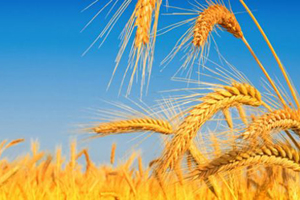The problems caused by global warming and the increasing deterioration of the ecological balance of the world increase people's concerns about healthy living and healthy eating. Agricultural products production is given more importance today, while standards development in this field and certification of manufacturers firms are gaining more and more speed. Good Agricultural Practices is a standard for certification studies.
Good Agricultural Practices have been developed in order to ensure that agricultural production is done in a way that does not harm human, animal and environmental health, while preserving natural resources and creating conditions to ensure that agricultural production can be monitored and sustainable. At the same time, it is aimed to provide reliable agricultural products to the markets.
Good Agricultural Practices are not designed to regulate the healthy living and nutrition conditions of today. With Good Agricultural Practices techniques agricultural production has made it possible for future generations to have natural resources such as air, water and soil, where they can produce healthy and adequate food.
Acting with this awareness, the World Trade Organization has established an agreement on the production and trade of agricultural products, on food and plant health, and on food safety regulations, which aim to protect international standards.
The Health and Phytosanitary Measures Agreement is based on two applications:
· Food safety Hazard Analysis and Critical Control Points (HACCP, Hazard Analysis Critical Control Points)
· Good Agricultural Practices (GAP, Good Agricultural Practices) for agricultural production
The World Food Organization (FAO) has also worked on the principles of Good Agricultural Practices.
Then large retailers in the European Union countries came together and set up the European Retailers Product Working Group (EUREP). In 1999, the European Retailers Product Working Group has prepared the Good Agricultural Practices Protocol (EUREPGAP) on the principles of Good Agricultural Practices in the production of fresh fruits and vegetables.
Good Agricultural Practices by the World Food Organization (FAO) are defined as being sustainable in the social sense, being an economically efficient and gaining system, and being reliable in terms of human health and standards that should be applied for environmentally sensitive behaviors. The main purpose is an agricultural production without harming human health and the environment.
In this respect, the Good Agricultural Practices system, Integrated Pest Management, requires integrated application of Integrated Crop Management in agricultural production.
While these developments are taking place in the world, it has become necessary to follow and implement various accepted standards in our country. Moreover, in addition to weather, water and soil conditions in our country, climate conditions are extremely suitable and our country is a country of agriculture and it is necessary to follow good agricultural practices in a place.
However, the fact that traditional methods are still being used in agricultural production in our country and conservative behaviors and material negativities about obtaining technical services have caused some problems in agricultural production. But the most important problem is the use of unconscious pesticides and the chemical residues that emerge in the exported agricultural products.
Good Agricultural Practices were issued in 2004 by the Ministry of Food, Agriculture and Livestock and revised in 2010 Implementing Regulation on Good Agricultural Practicesis considered an important step in this regard. The purpose of this regulation is to conclude with the principles of internationally recognized Good Agricultural Practices. In this way, all kinds of agricultural production, especially fruit and vegetable production began to develop. At the same time, thanks to these practices, the producers have gained more competitiveness in foreign markets.
Good Agricultural Practices are important not only in terms of agricultural production techniques, but also in hygienic conditions in later stages such as harvesting, transporting and storing of the post-production product from the field. Good Agricultural Practices use the HACCP Hazard Analysis and Critical Control Points standard to keep the product clean, to provide the necessary hygiene conditions and to avoid any contamination of the product.
But first of all, the quality of agricultural production, the environment in which agricultural production is carried out and the safety of the workers in the production are taken into consideration and they also use ISO 9001 Quality Management System, ISO 14001 Environmental Management System and OHSAS 18001 Occupational Health and Safety Management System standards.
To sum up, it does not harm human health because it does not contain harmful chemical, physical and microbiological residues. Likewise, during production, due to compliance with the necessary conditions, production is done without damaging the balance of nature and without polluting the environment. At the same time, compliance with the legal regulations of the country is ensured.
Not only are these counts as a gain, but also to manufacturers Good Agricultural Practices Certificate When given, the companies' national and international competitiveness is increasing and their chance to enter new markets is increasing.
TÜRCERT is one of the certification bodies conducting the agricultural product certification studies. TÜRCERT certification body is ready to provide all kinds of services for those who want to get more information about Good Agricultural Practices or who require Good Agricultural Practices Certificate.



